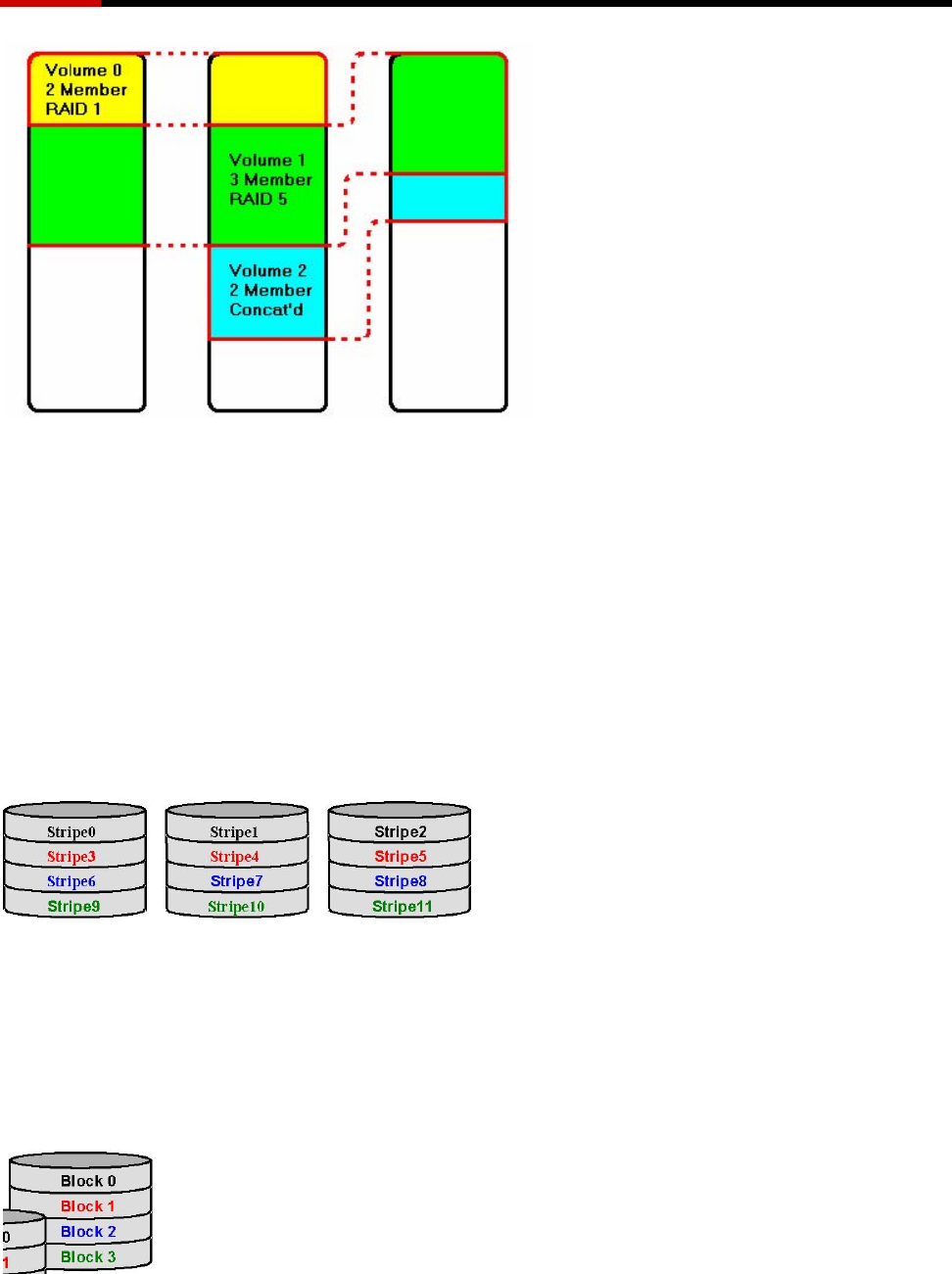
Server RSV-S5 User Manual
Figure 1: Dividing Disks into Members
2.3 RAID LEVELS
2.3.1 DISK STRIPING (RAID 0)
Striping is a performance-oriented, non-redundant data mapping technique. While Striping is discussed as
a RAID Group type, it is does not provide any fault tolerance. With modern SATA and ATA bus mastering
technology, multiple I/O operations can be performed in parallel, enhancing data throughput. Striping arrays
use multiple disks to form a larger virtual disk. The figure below illustrates a three-disk stripe set. Stripe one
is written to disk one, stripe two to disk two, and so forth. RAID 0 sets can be comprised of two, three, or
four drives. If the sizes of the disk segments are different, the smallest disk segment will limit the overall size
of the RAID Group.
2.3.2 DISK MIRRORING (RAID 1)
Disk mirroring creates an identical twin for a selected disk by having the data simultaneously written to two
disks. This redundancy provides instantaneous protection from a single disk failure. If a read failure occurs
on one drive, the system reads the data from the other drive. RAID 1 sets are comprised of two drives,
and a third drive can be allocated as a spare in case one of the drives in the set fails. If the sizes of the disk
segments are different, the smallest disk segment will limit the overall size of the RAID Group.
2.3.3 DISK MIRRORING AND STRIPING (RAID 10)
RAID 10 combines the features of both RAID 0 and RAID 1. Performance is provided through the use of
Striping (RAID 0), while adding the fault tolerance of Mirroring (RAID 1). The implementation of RAID 10
6


















